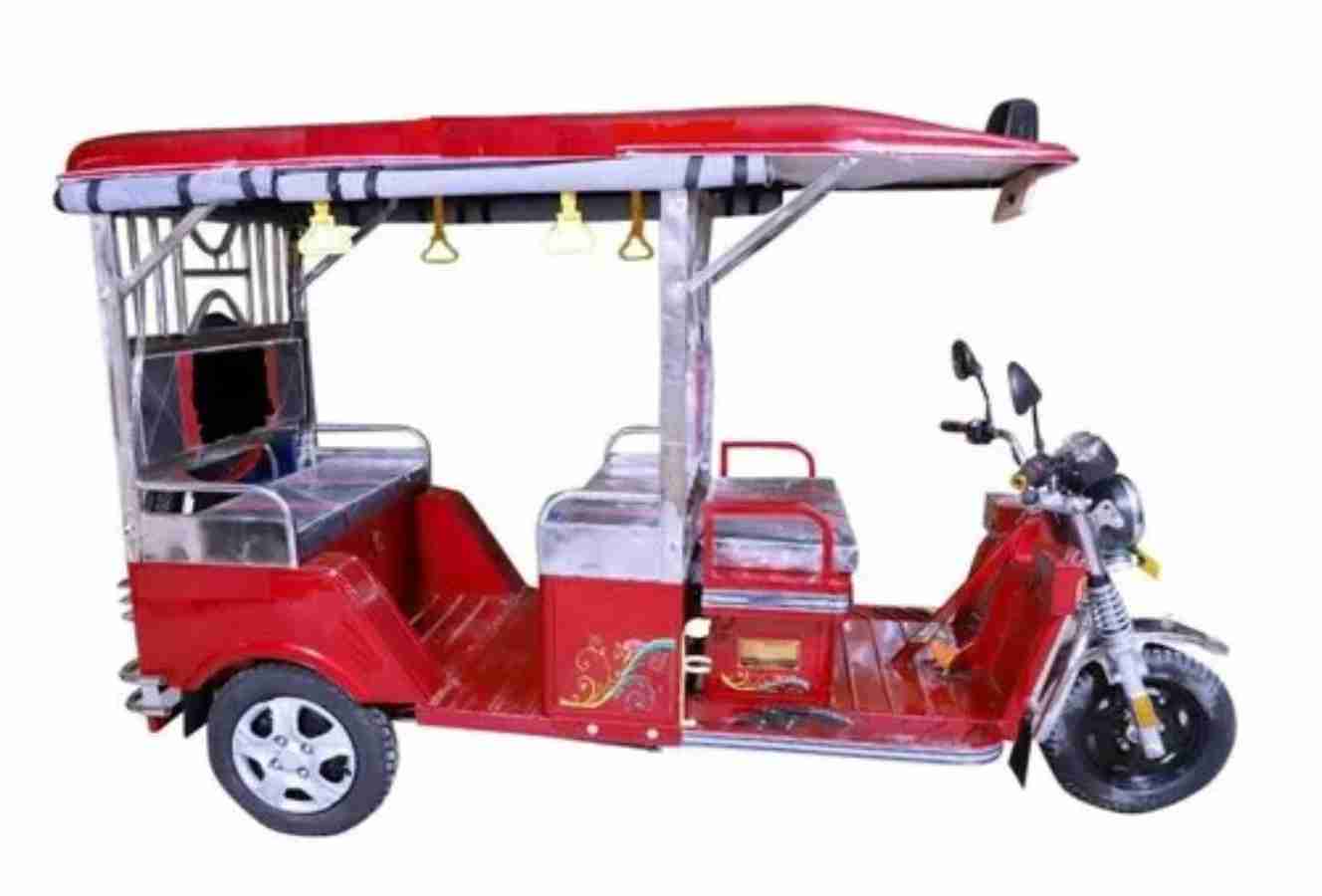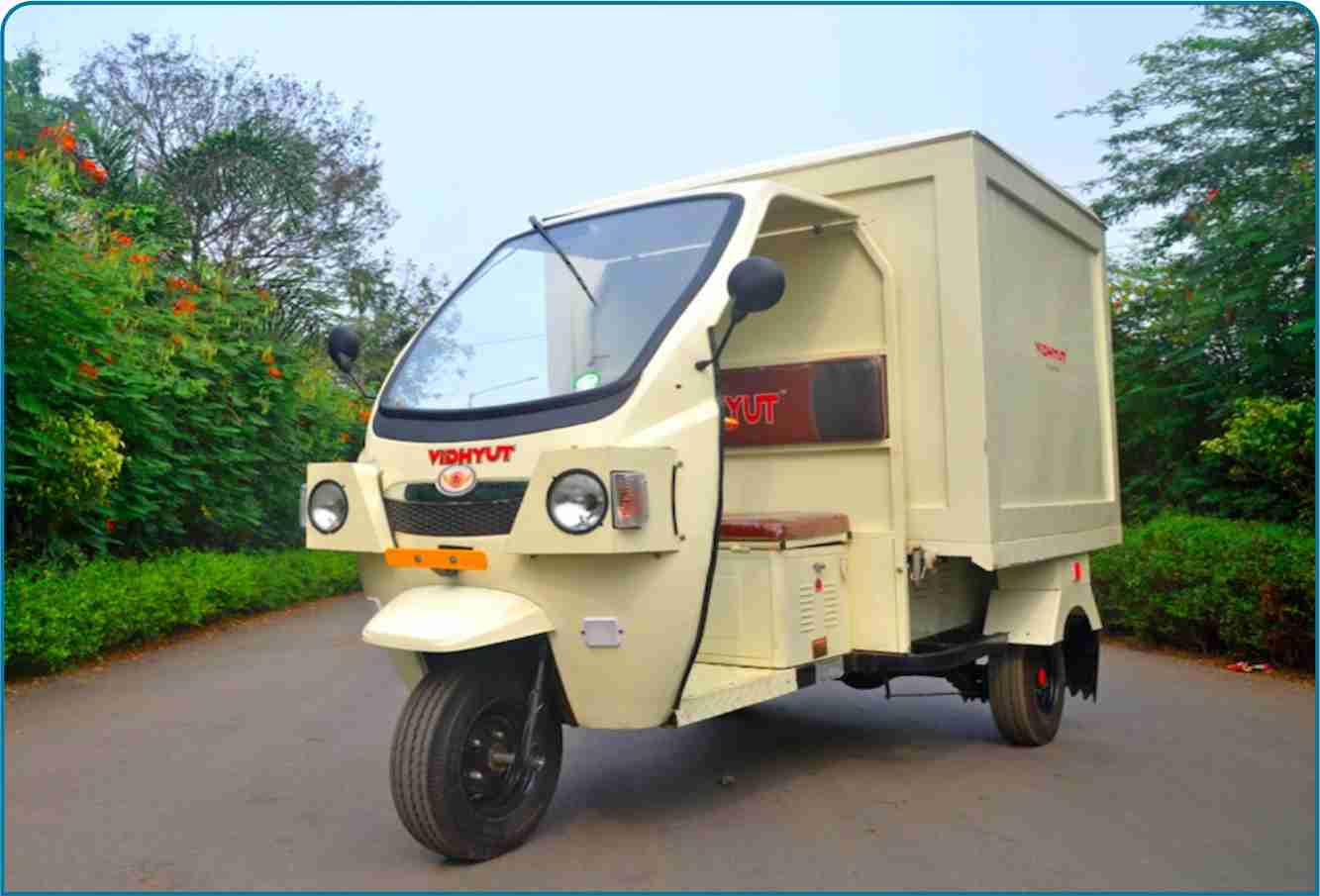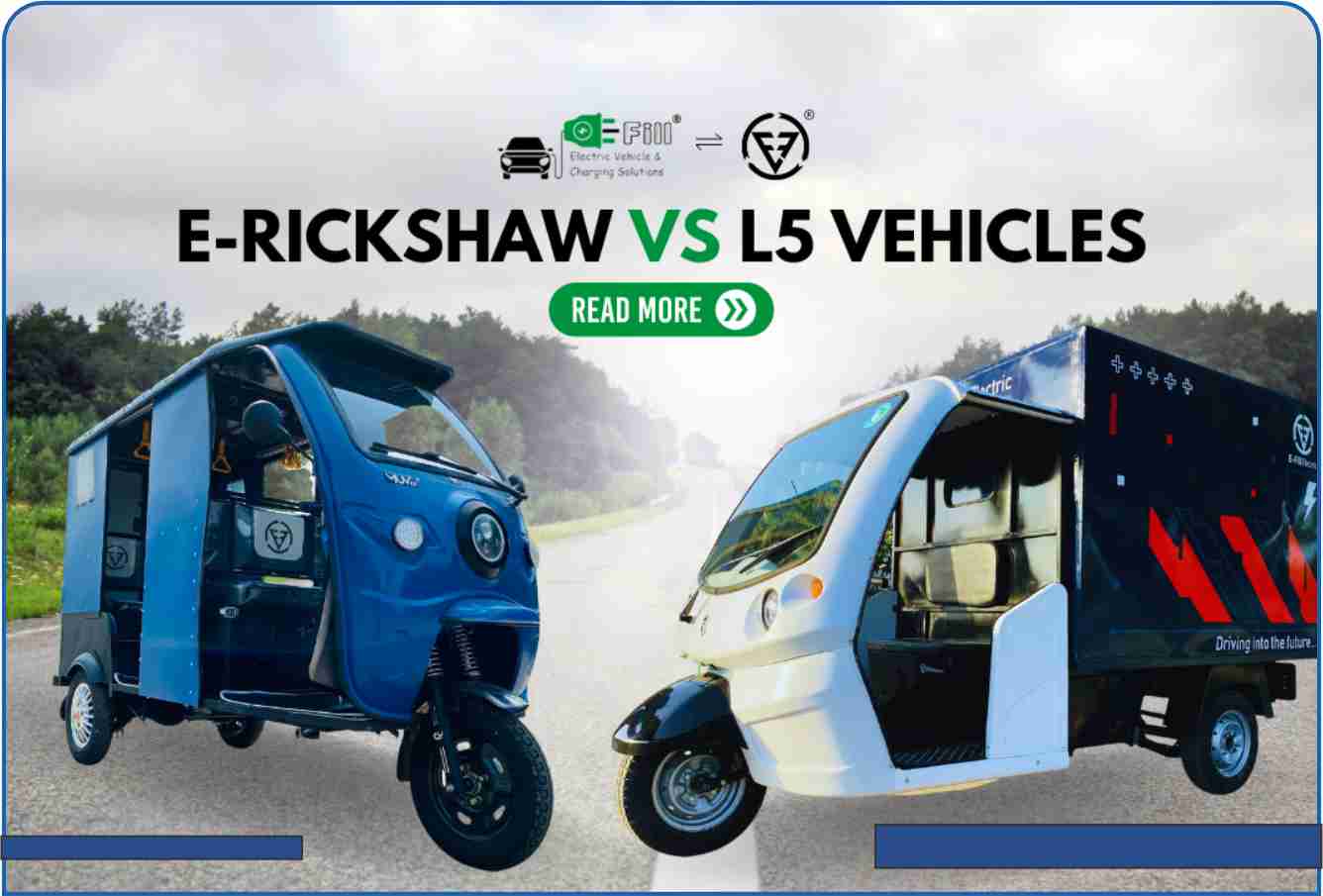E-rickshaw Vs L5 Vehicles
Electric vehicles (EVs) are a promising technology for achieving a sustainable transport sector in the future, due to their very low to zero carbon emissions, low noise, high efficiency, and flexibility in grid operation and integration. Petrol or diesel vehicles are highly polluting and are being quickly replaced by fully electric vehicles. India offers the world’s largest untapped EV market, with several automakers rolling out EV vehicles at a rapid pace, the penetration of these vehicles has increased significantly in the past few years. As per a recent study, EVs market is expected to be worth around at least ₹475 billion by 2025. However, keeping in mind the goals set under the Paris agreement, the increasing number of automobile customers shall not imply an increase in the consumption of conventional fuels. To ensure a positive growth rate towards achieving India’s Net Zero Emissions by 2070, a transportation revolution is required in India which will lead to better “walkability”, public transportation; railways, roads and better cars. Many of these “better cars” are likely to be electric. Two of the major segments through which Indian EV market is taking off is E-Rikshaw for last mile connectivity and L5 category Electric Three-wheeler. There are some E-Rikshaw manufacturers in who is playing crucial role to achieve Net Zero Emissions. E-fill Electrical charging Solution is one of them. E-fill Manufacturer of E-rikshaw, L5 and fast charging station, a common platform for E-rickshaw and fast Charging station, These both segments (E-rickshaw & L5) have their own merits and advantages, let’s go in detail comparison of the same.
Introduction to E-Rickshaw

“E-rickshaw” means a special purpose battery operated vehicle having three wheels and intended to provide last mile connectivity for transport of passengers for hire or reward. E-rickshaws were introduced in India in the late 2010s when these vehicles started operating in suburban and urban areas of Delhi–NCR, towns of Uttar Pradesh, Bihar, and West Bengal. E-rickshaws currently comprise 83 per cent of the India electric vehicle market. India currently has around 15 lakh e-rickshaws that increase with additional sales of around 11,000 new ones every month. These figures could be much higher as a large percentage is still unregistered. The market is expected to witness a sale of 9.25 lakh e-rickshaw by 2024. The major growth drivers behind this tremendous growth are socio-economic and environmental benefits, along with the supportive government policy landscape. Initially e-rickshaws were unregulated by Any central law in India. However, the Delhi High Court, banned running of e-rickshaws in Delhi on 31 July 2014 over safety concerns raised through a public interest litigation. Agencies like ICAT and ARAI do control the approval of assembly lines and vehicle design permit. E-Rickshaw provide a great last mile connectivity and is large share to EV ecosystem.
Technical specification of E-Rickshaw
*Electric rickshaws are small 3-wheeled vehicles powered by an electric motor ranging from 900 to 2000 Watts.
*They can be used as Passenger vehicle or Load carrier vehicle. Seating capacity of 4+1 or Load carrying capacity up to 310kg is allowed as per Central Motor Vehicle Rules (CMVR) – Rule No. 126 of ICAT.
*E-Rikshaw can have top speed up to 25kmph speed and maximum dimensions: 2800x1000x1800 mm (LxWxH).
*These rickshaws have a mild steel tubular chassis, consisting of three wheels with a differential mechanism at the rear wheels. The motor is a brushless DC motor.
*The electrical system used in Indian versions is 48V. Bodies made of fiberglass are also popular because of their strength and durability, resulting in low maintenance. Body design is varied from load carriers, passenger vehicles with no roof, to full body with windshields for drivers’ comfort. These vehicles can also be customised for vegetable stall, Ice cream parlour, garbage van, etc.
Introduction to L5 Category Vehicle

Category L5 means a three wheeled motor vehicle with maximum speed exceeding 25kmph or motor power exceeding 0.25kW, if fitted with electric motor and the vehicle shall normally use for carrying persons or carrying goods. Further this segment is categorized in two sub categories i.e., L5N and L5M for Goods career and Passenger vehicle respectively. The preference for 3Ws has increased because the big trucks or mini-vans are too expensive to operate and cannot offer doorstep reach in most of the cities due to narrow streets, while 2-wheelers (2Ws) offer only limited load carrying capacity. With the burgeoning popularity of 3W EVs in the final-mile segment, they’re all set to become more and more mainstream a worthy investment that users should consider in 2022 and beyond. L5 is majorly owned and used in fleet operations and overcomes the limitations of E-Rickshaw as they are powered with more capacitive battery pack with high powered electric motor for large and heavy goods.
Technical specification of L5 Category Vehicle
*L5 vehicle are having much more load carrying capacity and power. It’s a high-speed vehicle as compare to E-Rikshaws.
*The vehicle can weigh up to 1500kg and maximum dimensions: 4000x1600x2500 mm (LxWxH).
*These vehicles are having 150-200 km range and equipped with new technologies like liquid cooled battery pack, high performance motor for more gradeability, GPS monitoring and control, CAN based BMS, etc.
*Body design comes with various types of materials such as hard top, canopy, TPO, etc, as per strength and durability.
*L5 vehicles comes with hydraulic braking system and advanced suspension system to deal with high-speed bumps and curves. Also, for wider visibility, it comes with either halogen or projector headlamps.
*Charging time are generally 4-5 hrs* with onboard charger and 1-2 hrs* with DC fast charger.
So now you almost know the difference between E-rickshaw and L5 so let’s talk about how much you can earn with E-rickshaw/ rickshaw rental business.
Starting a E-rickshaw business is not too much difficult & does not required a lot of paper works. E rickshaw is provided on an EMI by a lot of Manufacturers and banks. They are providing as a gateway to independence for both man and women in the poor and underprivileged societies. Even a working individual can invest in E-rickshaw and rent them out to earn decent amount on the other side.
We have already discussed above that it comes generally cheaper than most petrol/diesel vehicles & its most preferred public transport. It required an initial investment of about 1.5 lacs per vehicles.
Investing in a number of rickshaws is good if you are looking to rent them out. It required a cost of about 10 lacs if you purchase 8-10 rickshaws. You could rent these rickshaws out for a minimum of INR 300- 350 and generate a daily income of around 3000 INR.
It is also essential to note that rental of electric rickshaws require other expenses such as electricity charges, maintenance and repair charges of the vehicles, which would take approximately 1000 per day & 600 per month respectively. It also required some parking space for all of them, which would require some investment.
An electric rickshaw rental business is the most smart and viable form of business, not just for you but for the drivers as well. And with the growing demand for electric rickshaws as well as the plans being initiated by the government for them, electric rickshaws will soon become the face of public transportation.
EFEV charging solution is a manufacturer of electric vehicles/ Fast Electric charging stations that combat environmental issues and economic issues in India. Join us in our fight for a sustainable environment as well as a cleaner and greener India.




